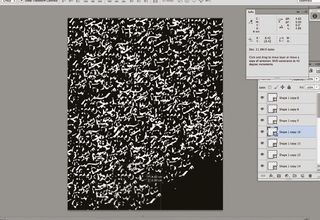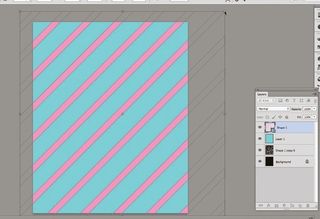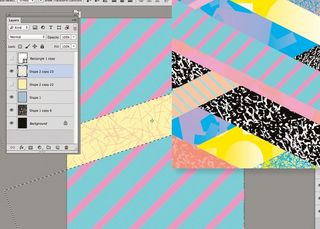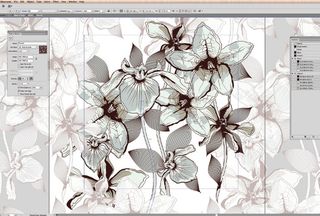Interactive design with Arduino
Arduino opens up a new world of interactive possibilities for designers who have never dreamt of trying electronic engineering before. So what’s it all about?
Let’s start with the basics: Arduino is an open-source, flexible electronics prototyping platform pitched at designers, hobbyists and other inquisitive, creative people who are interested in building interactive projects quickly and with relative ease. It works by gathering inputs from various sensors, and in turn controlling a selection of different outputs, such as LEDs or motors. You tell the microcontroller what to do using Arduino’s own programming language (similar to Wiring), while its integrated development environment (IDE) is based on Processing – and many creative projects use the two in tandem to generate visual outputs.
There’s a real plug-and-play, DIY feel to Arduino, and the vast open-source community that surrounds the technology encourages designers to push their boundaries, experiment and try new things. “A few low-cost tools and some open-source software is all you need to get started,” explains Nick Schulze, a Mechatronics graduate from Adelaide University. “If you’re at least a little bit creative and have a genuine interest in it, then you can get involved in the electronics scene.”

One of Schulze’s most ambitious projects to-date is a large LED installation to display three-dimensional animations. “I started with an Arduino and a big bag of LEDs, designed a driver board, then created a jig to assemble 512 of them into a cube,” he explains.
But what are the creative options for those who didn’t study Mechatronics? FlipMu is a good example of a studio that applies the many and varied aesthetic possibilities of interactive technology to commercial work, with a client roster including Nokia, Harman/AKG and California Institute of the Arts.
Co-founders Owen Vallis and Jordan Hochenbaum have produced everything from public art installations to live musical performances using custom hardware and software. “We are composers and performers first, but often end up designing projects involving music, visual art, design and technology,” explains Vallis. “Many lines that used to separate artistic disciplines no longer make sense.”
Developed entirely using the Arduino IDE, FlipMu’s Arduinome project, completed a few years back while its founders were studying at California Institute of the Arts, originally grew from a love of Monomes: minimalistic peripherals that comprise a simple grid of buttons, used primarily in electronic music. The duo is now taking the Arduinome to another level with Chronome, currently in Beta – which adds RGB colour LEDs and pressure sensitivity.
“There’s something to be said for opening an old toy, taking some alligator clips and poking around: the results can be unexpected, beautiful and unruly,” enthuses Hochenbaum. “But this type of project involves so many different components. Hardware and firmware design; manipulating data; software integration; visual design; you name it, really.”

The point is that Arduino can only really simplify electronics and software engineering to a certain degree. “To build complex things, you do still need expertise in software or hardware, especially if you want to be the first to do something,” reasons Paris-based Olivier Mvel, who set up reaDIYmate with Marc Chareyron in 2009. “There’s no miracle in the tools: the miracle is in the community. When you have a huge community, you have a lot of expert people who can help you build solutions for complex problems.”
Whether it’s standing on the shoulders of someone else’s open-source code, or having a specific question answered in a forum, it’s certainly the case that for many designers experimenting with Arduino, the ability to tap into the hive-mind is invaluable in order to push boundaries with the technology.
Both Mvel and Chareyron have experience in digital agencies in their native France: the former co-founded Violet and created Nabaztag, the first internet-enabled rabbit; the latter was managing director and partner at Duke-Razorfish. The duo regards reaDIYmate as a consumer electronics producer, rather than a design studio: “We are not designers – we are empowering the designer that sleeps inside each of us,” declares Mvel.
Essentially, reaDIYmate enables you to build objects out of paper that can then react to your digital world. Using an Arduino, these unassuming models are hooked up to your digital and social media services – including Facebook, Twitter, Gmail, Soundcloud and If This Then That – and move and play sounds based on what happens.
Models range from papercraft characters to abstract kinetic sculptures, which designers can either build themselves from scratch, or buy blank and customise. “Instead of letting users start from scratch, we wanted to offer an easy and rewarding step that results in a great product, paving the way for the second step: modifying the design, the software and the hardware,” adds Mvel. “That’s why we’re using Arduino.”

The tech itself is highly accessible to the average designer, according to FlipMu’s Owen Vallis – in terms of both cost and usability: “We’ve worked with animators, classical north Indian musicians, contemporary dancers, you name it,” he smiles. “It’s not always easy, but there’s so much support around, ideas, examples to hack, and new toolkits. Pretty much anyone can get involved.” John St Leger first began experimenting with the technology in his second year studying Graphic Design: New Media at the University of the Creative Arts (Epsom), and he particularly enjoys how Arduino can make complex ideas more approachable: “It leaves a designer unrestricted to a certain medium and free to make whatever they perceive possible,” he says.
“All of my projects begin on paper, and involve a huge amount of research and experimentation. The computer comes second,” St Leger continues. “For Arduino projects, I create high-fidelity prototypes with cheap materials, and use those to work out any issues. My process involves a lot of failures, but those failures supply a new depth of knowledge and often form accidental breakthroughs.”
A recent graduate from the same course, Jason Mingay works across the fields of motion graphics and interactive design. “With Arduino, you can turn an ordinary piece of design into an innovative idea simply by adding a few sensors for people to react or play with it,” he says.
While the hardware itself may not have progressed significantly since he first discovered it a year ago, Mingay is constantly finding new sensors and attachments to try out: “So far I’ve experimented with a vibration sensor, motion sensor, light sensor and most recently a pulse-rate sensor,” he reels off.
One of his most experimental projects monitors a viewer’s emotional response to a piece of video, and then uses this information to affect how they view it in real-time. “My idea was to use their pulse to alter the speed at which video clips were put together,” explains Mingay.
A pulse-rate sensor was connected to an Arduino, which then used Processing to control the video. “My main hurdle was getting the sensor itself to work properly,” he admits. “I started with a homemade version that consisted of an IR LED and sensor each side of your finger, which worked for a while, but gave me a lot of stress – so I ended up ordering a ready-made pulse-sensor from America.”

Of course, the thought of fiddling with circuit boards and microprocessors is enough to send a shiver down many designers’ spines. So what are the main issues you’ll need to overcome? “For me, the initial hurdle was learning the basics of programming,” advises Hochenbaum. “Text programming is very much a language, and at first it can be frustrating to have an idea but not be able to communicate it through code.”
Languages pitched at designers and artists, such as Processing and ChucK for visuals and audio respectively, make things easier – but the hardware can prove a bit of a learning curve too. “The best way to learn technology is to have a reason to use it,” he believes. “A project can provide the context in which to understand it.”
Other more day-to-day issues that John St Leger has encountered include supplying too high a voltage and frying servos in the process; cutting parts wrongly, and breaking essential components off by accident. Mingay concurs that even the cleanest, most immaculate coding in the world won’t be able to save you if your wiring is wrong.
“Beware dodgy breadboards,” warns Vallis, referring to the reusable construction modules that are used for electronic prototyping without the need for soldering. “It takes more time, but building a shield board” – a printed circuit board that plugs on top of an Arduino to expand it – “and connecting external sensors cleanly through something like a ribbon cable can help to avoid frustrating issues as a project develops. Nothing’s worse then having to de-solder large chunks of a circuit because you changed your mind about the pin arrangement.”
All these designers agree that we’re yet to scratch the surface of what’s possible with Arduino technology. Schulze foresees prices dropping and product ranges broadening, to the point where the technology becomes even more accessible to individuals around the world.
“Combine low cost, readily available hardware with the fact that people from all over the globe are now working on open-source projects, and I think we’ll end up with some amazing products,” he concludes. “I believe we as experimenters will lead the way into the future.”
Get the Creative Bloq Newsletter
Daily design news, reviews, how-tos and more, as picked by the editors.

Thank you for reading 5 articles this month* Join now for unlimited access
Enjoy your first month for just £1 / $1 / €1
*Read 5 free articles per month without a subscription

Join now for unlimited access
Try first month for just £1 / $1 / €1
The Creative Bloq team is made up of a group of design fans, and has changed and evolved since Creative Bloq began back in 2012. The current website team consists of eight full-time members of staff: Editor Georgia Coggan, Deputy Editor Rosie Hilder, Ecommerce Editor Beren Neale, Senior News Editor Daniel Piper, Editor, Digital Art and 3D Ian Dean, Tech Reviews Editor Erlingur Einarsson and Ecommerce Writer Beth Nicholls and Staff Writer Natalie Fear, as well as a roster of freelancers from around the world. The 3D World and ImagineFX magazine teams also pitch in, ensuring that content from 3D World and ImagineFX is represented on Creative Bloq.
Related articles
-

-

-

-

